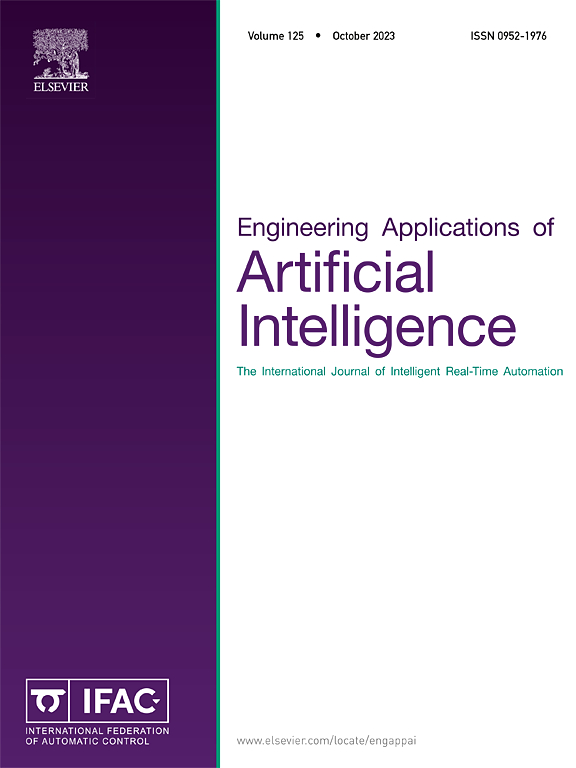Deep reinforcement learning for optimal design of compliant mechanisms based on digitized cell structures
IF 7.5
2区 计算机科学
Q1 AUTOMATION & CONTROL SYSTEMS
Engineering Applications of Artificial Intelligence
Pub Date : 2025-04-05
DOI:10.1016/j.engappai.2025.110702
引用次数: 0
Abstract
Metamaterial mechanisms are micro-architectured compliant structures that operate through the elastic deformation of specially designed flexible members. This study introduces an efficient design methodology for compliant metamaterial mechanisms using deep reinforcement learning (RL). In this approach, design domains are digitized into finite cells with various hinge connections, reformulating the design problem as a combinatorial optimization problem. To tackle this intricated optimization problem, we unfold the domain to transform the design problem into a Markov decision process where the deformation behaviors of the designed compliant mechanisms are computed through finite element analysis (FEA). The digitized cell structures are modeled using 1-dimensional (1D) beam elements, significantly reducing the computational load of FEA. The FEA results are utilized in the deep RL framework to optimize compliant mechanism designs based on specific functional requirements. This methodology is applied to the design of compliant gripper and door-latch mechanisms, exploring the effects of cell tiling direction and penalization strategies for disconnected hinges. The optimized designs generated by deep RL outperform human-guided designs, achieving a 56.3% improvement in rotational compliance for the gripper mechanism and a 2.7-fold improvement in linear compliance for the door-latch mechanism, compared to human-guided designs. The optimized compliant mechanisms are fabricated using additive manufacturing, and their performance as compliant mechanisms is experimentally validated. These findings highlight the potential of RL-based design optimization using digitized cell structures, demonstrating its capability to efficiently design high-performance compliant metamaterial mechanisms while maintaining computational efficiency.
求助全文
约1分钟内获得全文
求助全文
来源期刊

Engineering Applications of Artificial Intelligence
工程技术-工程:电子与电气
CiteScore
9.60
自引率
10.00%
发文量
505
审稿时长
68 days
期刊介绍:
Artificial Intelligence (AI) is pivotal in driving the fourth industrial revolution, witnessing remarkable advancements across various machine learning methodologies. AI techniques have become indispensable tools for practicing engineers, enabling them to tackle previously insurmountable challenges. Engineering Applications of Artificial Intelligence serves as a global platform for the swift dissemination of research elucidating the practical application of AI methods across all engineering disciplines. Submitted papers are expected to present novel aspects of AI utilized in real-world engineering applications, validated using publicly available datasets to ensure the replicability of research outcomes. Join us in exploring the transformative potential of AI in engineering.
 求助内容:
求助内容: 应助结果提醒方式:
应助结果提醒方式:


